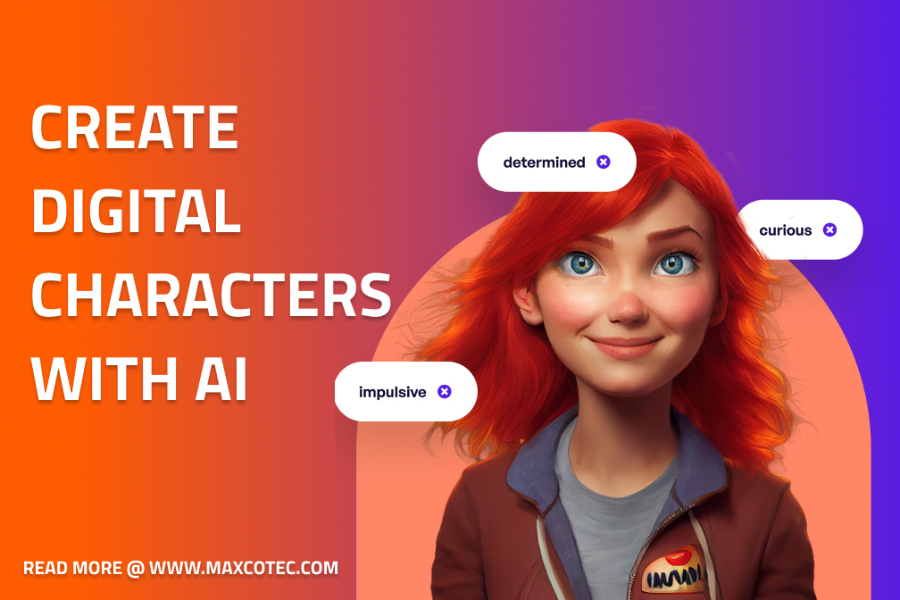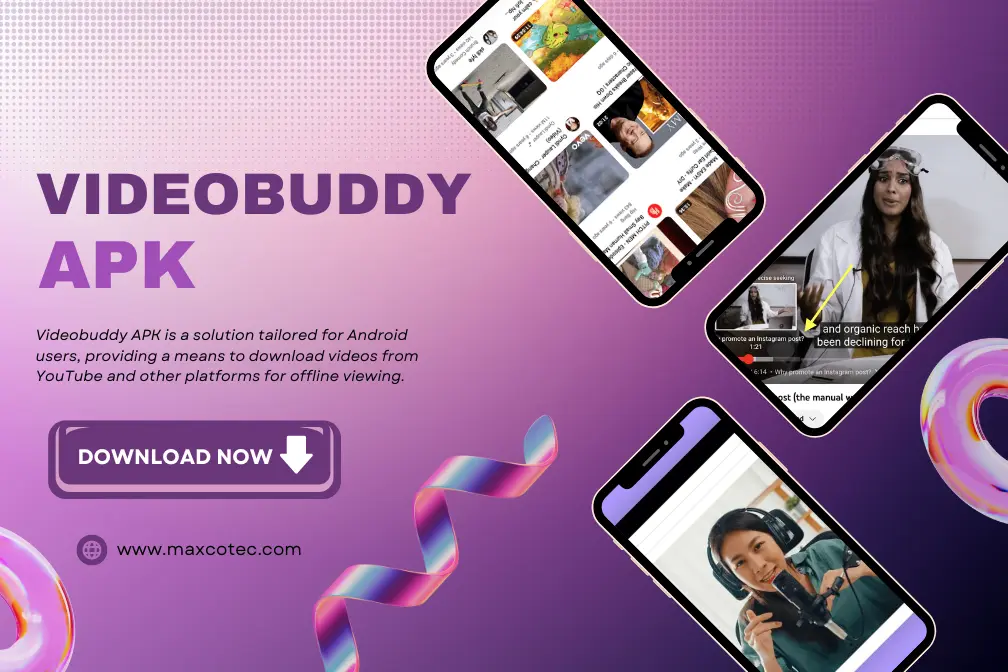Key Features:
- Save time and effort with AI automating tasks like profile generation, dialogue, and behavior patterns.
- Gain valuable insights into human behavior and societal dynamics, developing more realistic and diverse characters.
- AI acts as a creative partner, offering fresh ideas and suggestions to inspire innovative character development.
- AI-generated emotions and reactions enhance character depth, creating empathetic and relatable personalities.
- Continuously refine characters based on feedback, aligning them with your vision and audience preferences.
- Mitigate biases through inclusive data and promote diversity in character representation.
- Optimize the character development process with AI’s ability to generate ideas and automate repetitive tasks.
- Address ethical concerns, ensure transparency, and take responsibility for the final character outcomes.
In the realm of storytelling and creative endeavors, the development of compelling and relatable characters plays a pivotal role. Creating characters that resonate with the audience and evoke emotional connections is crucial for the success of any creative project.
With the rapid advancements in artificial intelligence (AI), a new tool has emerged to aid in character development: Beta Character AI. Beta Character AI leverages the power of machine learning, natural language processing, and other AI algorithms to assist creators in shaping and refining their fictional personas. Every thing there is to know about charachter ai is written extensively in Tech Blogs In USA.
Importance of AI in character development

The integration of AI into character development processes brings numerous advantages and opportunities.
- Efficiency and Time-saving: AI automates character creation tasks, saving time and effort for creators to focus on other creative aspects.
- Data-driven Insights: Artificial intelligence processes data to provide valuable insights into human behavior, psychology, and societal dynamics, enabling the development of realistic and diverse characters.
- Enhanced Creativity: AI acts as a creative partner, offering unique ideas and suggestions that expand the creative possibilities for character development.
- Emotional Intelligence: It simulates realistic emotions, adding depth and relatability to characters, and enhancing the audience’s emotional connection.
- Iterative Improvement: AI allows for continuous refinement of characters based on feedback, ensuring alignment with the creator’s vision and audience preferences.
Uncover the 10 compelling reasons why using a cracked version of Wondershare Filmora 11 is not worth the risk or hassle at Tech Blog USA.
Understanding Beta Character AI

Beta Character AI refers to the application of artificial intelligence (AI) in the process of character development. It involves leveraging AI algorithms, machine learning, natural language processing, and data analysis to assist creators in crafting rich, multidimensional characters for various forms of media.
The concept of Beta Character AI revolves around using advanced computational techniques to generate insights, suggestions, and content that contribute to the creation of compelling fictional personas.
Role of AI in Creating Compelling and Relatable Characters

AI plays a crucial role in character development by augmenting and expanding the creative capabilities of human authors. Here are some key roles that AI fulfills in the process:
- Data Analysis: AI analyzes diverse data sources to provide insights that inform character development decisions.
- Inspiration and Idea Generation: AI generates unique character ideas and suggestions based on analysis of existing elements, sparking creativity in creators.
- Personality and Behavior Modeling: AI models character traits, behavior patterns, and decision-making processes using knowledge of human psychology, language, and emotions.
- Audience Analysis and Engagement: AI analyzes audience feedback and preferences, enabling creators to tailor characters for better audience connection and emotional engagement.
Getting Started with Beta Character AI

Choosing the Right AI Platform or Tool
When venturing into Beta Character AI, selecting the appropriate AI platform or tool is essential.
Functionality
Evaluate the features and capabilities of different AI platforms. Some may specialize in generating dialogue, while others excel at personality profiling or behavior modeling. Choose a platform that aligns with your specific character development needs.
User-Friendliness
Look for an AI tool with a user-friendly interface and clear documentation. The tool should be intuitive and accessible, enabling both experienced creators and newcomers to leverage its potential effectively.
Compatibility
Ensure compatibility between the AI platform and your preferred creative software or workflow. Consider factors such as data integration, file formats, and interoperability to streamline the character development process.
Understanding the Capabilities and Limitations of Beta Character AI

While Beta Character AI offers immense potential, it’s crucial to understand its capabilities and limitations:
Creativity Augmentation
AI can provide inspiration, generate content, and offer suggestions, but it’s important to remember that it complements human creativity rather than replacing it. AI should serve as a tool to enhance and expand creative possibilities, not as a substitute for originality and imagination.
Data Dependency
AI algorithms rely on data for analysis and generation. Ensure that the data used are diverse, relevant, and representative to avoid reinforcing biases or stereotypes. Additionally, understand that AI-generated outputs are only as reliable as the data they’re trained on.
Contextual Understanding
AI algorithms may struggle with context and subtleties. While they can generate content based on patterns and data, they might not grasp the underlying nuances or cultural sensitivities. Human judgment is crucial in evaluating and refining AI-generated outputs.
Setting Clear Goals and Objectives for Character Development
Before diving into Beta Character AI, establish clear goals and objectives for your character development process:
Character Archetypes
Determine the type of character archetypes you want to explore, such as the hero, anti-hero, mentor, or comic relief. Clarify the traits, roles, and purpose of your characters within the narrative.
Narrative Function
Define how the characters will contribute to the overall story. Consider their relationships, conflicts, and character arcs to ensure they serve the narrative effectively.
Emotional Impact
Identify the desired emotional responses you want your characters to evoke in the audience. Do you aim for empathy, inspiration, fear, or amusement? Align your character development goals with the intended emotional impact.
Boost your Instagram engagement effortlessly with Display Purposes, the top-rated hashtag generator of 2023!
Gathering Data and Input

Collecting Relevant Information and Research for Character Creation
Effective character development requires thorough research and data gathering. Consider the following steps:
Study Existing Characters
Analyze well-crafted characters from literature, films, or other media. Understand how their traits, motivations, and conflicts contribute to their overall depth and relatability.
Psychological Research
Delve into psychology and behavioral sciences to gain insights into human behavior, personality traits, and emotional responses. Understand the theories and concepts that can inform your character development process.
Social and Cultural Context
Consider the social and cultural context of your characters. Research different cultures, historical periods, or social groups to avoid stereotypes and create authentic and diverse characters.
Defining Key Traits, Personality, and Backstory
Once you have gathered relevant information, define the key aspects of your characters:
Personality Traits
Determine the core personality traits that define your character. Consider traits like introversion/extroversion, honesty, ambition, or compassion, ensuring they align with their narrative roles and goals.
Motivations and Goals
Understand what drives your characters and the goals they strive to achieve. Their motivations will shape their behavior, decisions, and conflicts throughout the story.
Backstory and Experiences
Craft a backstory for your characters that outlines their past experiences, traumas, or formative events. This backstory will influence their beliefs, values, and emotional development.
Incorporating Diverse Perspectives and Avoiding Biases
Character development should embrace diversity and avoid perpetuating biases:
Representation
Ensure that your characters represent a range of backgrounds, cultures, genders, and identities. Embrace inclusivity to create characters that resonate with diverse audiences.
Sensitivity Readers and Feedback
Seek feedback from individuals who can provide insights on the accuracy and cultural sensitivity of your characters. Engage sensitive readers or collaborate with individuals who can offer diverse perspectives to avoid stereotypes or misrepresentations.
Self-Reflection and Awareness
Continuously reflect on your own biases and assumptions. Challenge stereotypes and preconceived notions to create well-rounded and authentic characters.
Utilizing AI Algorithms

Generating Character Profiles and Archetypes
AI algorithms can assist in generating character profiles and archetypes based on the data and parameters provided. Consider the following approaches:
Input and Parameters
Provide relevant information to the AI, such as personality traits, narrative roles, and desired archetypes. Define the scope and characteristics of the characters you want to create.
Machine Learning Techniques
Utilize machine learning algorithms to analyze data and generate profiles based on patterns and correlations. The AI can provide insights and suggestions for character traits, motivations, and behaviors.
Using Natural Language Processing for Dialogue and Speech Patterns
Natural language processing (NLP) can enhance character dialogue and speech patterns. Follow these steps:
Corpus Analysis
Feed AI models with a corpus of literature, dialogues, or specific genres to develop an understanding of language usage, tone, and speech patterns.
Training and Fine-tuning
Train the AI models to generate dialogue that aligns with the desired character traits, voice, and tone. Fine-tune the AI outputs to match the character’s personality and narrative context.
Iterative Refinement
Continuously analyze and adjust the AI-generated dialogue to ensure coherence, authenticity, and alignment with the character’s development.
Applying Machine Learning to Character Behavior and Decision-making
Machine learning can assist in shaping character behavior and decision-making processes. Follow these guidelines:
Data-driven Analysis
Provide relevant data on human behavior, psychological research, and social dynamics to train AI algorithms. This data will inform the character’s decision-making and behavior generation.
Reinforcement Learning
Utilize reinforcement learning techniques to train AI models to make decisions based on specific parameters and objectives. It can enhance the authenticity and consistency of character behavior.
Collaboration with Human Creativity
Combine AI-generated behavior with human creativity and intuition. Evaluate and refine the AI-generated outputs to align them with the character’s personality, motivations, and narrative goals.
Refining and Iterating
Analyzing and Evaluating AI-generated Character Outputs

As you work with AI-generated character outputs, perform thorough analysis and evaluation:
Consistency and Coherence
Assess the consistency and coherence of the AI-generated outputs with the character’s personality, backstory, and narrative context. Ensure that the behavior, dialogue, and decisions align with the established traits and motivations.
Emotional Resonance
Evaluate the emotional impact of the AI-generated outputs on the audience. Assess whether the character evokes the intended emotional responses and connection.
Alignment with Goals
Compare the AI-generated outputs against the initial goals and objectives set for character development. Determine whether the AI outputs contribute to the desired character development trajectory.
Iteratively Adjusting Parameters and Inputs for Desired Results
Based on the analysis and evaluation, iteratively adjust the AI’s parameters and inputs:
Feedback Loop
Collect feedback from beta readers, focus groups, or industry professionals to gain insights into the effectiveness of the AI-generated character outputs. Use this feedback to identify areas for improvement and refine the AI models accordingly.
Fine-tuning and Training
Continuously refine the AI models by fine-tuning the parameters, incorporating additional data, or adjusting the training process. This iterative approach helps align the AI-generated outputs with the creative vision and objectives.
Combining AI-generated Content with Human Creativity and Intuition

Remember that AI is a tool to enhance human creativity and intuition, not a replacement for them:
Human Touch
Infuse the characters with your creative ideas, emotions, and storytelling instincts. Blend the AI-generated outputs with your personal touch to create unique and compelling characters.
Iterative Collaboration
Engage in a collaborative process with the AI. Use the AI-generated content as a starting point, and then iterate, adjust, and refine the outputs to align with your creative vision and narrative objectives.
Flexibility and Adaptation
Remain open to adapting the AI-generated content based on the evolving needs of the story and audience feedback. Embrace the dynamic nature of character development and adjust accordingly.
Unlock the full potential of Minecraft with Chunk Base – your go-to resource for mods, apps, tutorials, and more!
Enhancing Emotional Intelligence
Incorporating Emotional Depth and Complexity in Characters

AI can help infuse characters with emotional depth and complexity:
Emotional Arcs
Utilize AI-generated insights to shape the emotional arcs of your characters. Consider how their experiences, relationships, and motivations contribute to their emotional journey throughout the story.
Vulnerability and Resonance
Incorporate vulnerabilities and emotional struggles that make characters relatable and evoke empathy from the audience. Use AI-generated emotional intelligence to inform their reactions, responses, and growth.
Leveraging AI to Simulate Realistic Emotions and Reactions
AI algorithms can simulate realistic emotions and reactions, enhancing character development:
Emotion Generation
Train AI models to generate emotionally nuanced responses based on specific situations, conflicts, or stimuli. It can add depth and authenticity to the characters’ emotional experiences.
Emotional Consistency
Ensure that the AI-generated emotions align with the character’s personality, backstory, and narrative context. Maintain consistency in their emotional responses to maintain believability.
Creating Empathetic and Relatable Characters through AI Assistance
AI can contribute to creating characters that connect with the audience on an emotional level:
Empathy Mapping
Use AI-generated insights to map out the emotional journey of your characters. Understand the triggers, motivations, and underlying emotions that drive their actions and decisions.
Relatability Analysis
Leverage AI to analyze relatability factors for your characters. Assess how the audience is likely to connect with the characters’ experiences, struggles, and growth.
Integrating Beta Character AI in the Creative Process
Collaborating with AI as a Creative Partner, Not a Replacement

Embrace AI as a creative partner in the character development process:
The synergy of Human and AI
Emphasize collaboration between human creativity and AI-generated outputs. Use AI as a tool to augment your creative capabilities, allowing it to inspire and inform your decisions.
Iterative Feedback Loop
Continuously exchange feedback and ideas with the AI. Use AI-generated content as a starting point and iterate based on human input, ensuring that the creative vision remains central.
Streamlining Character Development Workflows Using AI
AI can streamline and optimize the character development workflow:
Efficient Idea Generation
Use AI algorithms to quickly generate a wide range of character ideas and possibilities. This accelerates the ideation phase, providing a broader pool of options to explore.
Automated Processes
Automate repetitive tasks, such as generating dialogue variations or analyzing character traits, using AI. This frees up time for more creative and strategic aspects of character development.
Experimenting and Adapting AI-generated Characters as Needed

Remain open to experimentation and adaptation when working with AI-generated characters:
Iterative Testing
Test the AI-generated characters in different scenarios and narrative contexts. Analyze how they interact with the story and audience, and make necessary adjustments based on the results.
Creative Flexibility
Do not hesitate to deviate from the AI-generated outputs if the creative vision or narrative demands it. Use AI-generated content as a foundation for exploration and adaptation rather than a rigid constraint.
Conclusion
Integrating Beta Character AI into the creative process can revolutionize character development by providing new insights, enhancing efficiency, and pushing creative boundaries. However, it is essential to approach this technology with careful consideration and responsibility.
In this ever-evolving landscape of AI, it is vital to approach Beta Character AI as a tool that amplifies and complements human creativity, not as a replacement. By harnessing the power of AI while maintaining artistic integrity and ethical responsibility, creators can unlock new possibilities and create compelling characters that captivate audiences.






